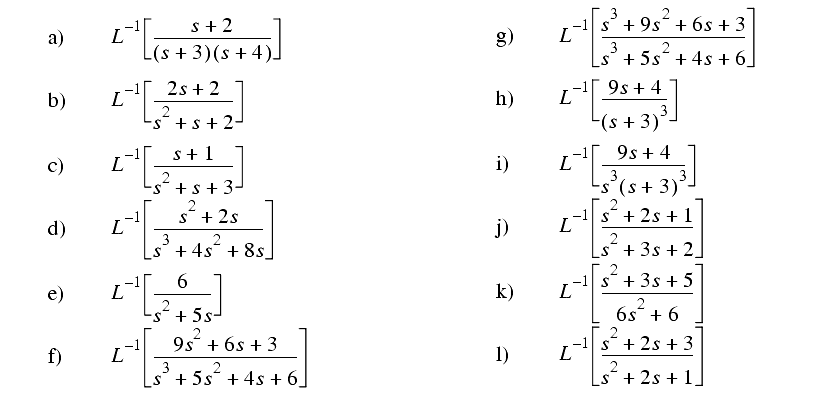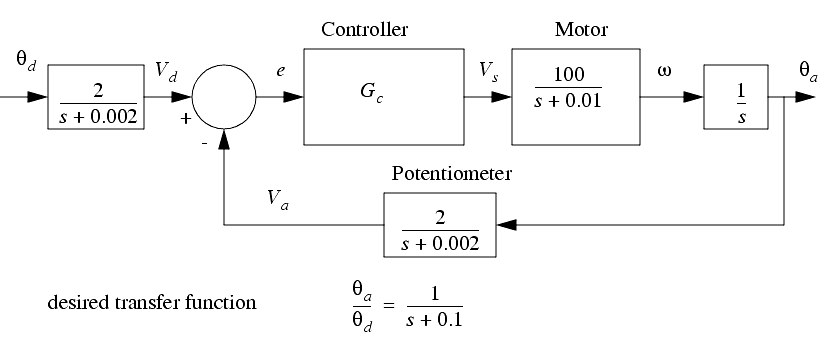17.11 PRACTICE PROBLEMS
������������
1. Convert the following functions from time to laplace functions using the tables.
2. Convert the following functions below from the laplace to time domains using the tables.
3. Convert the following functions below from the laplace to time domains using partial fractions and the tables.
4. Convert the output function below Y(s) to the time domain Y(t) using the tables.
5. Convert the following differential equations to transfer functions.
6. Given the transfer function, G(s), determine the time response output Y(t) to a step input X(t).
7. Given the following input functions and transfer functions, find the response in time.
8. Do the following conversions as indicated.
9. Convert the output function to functions of time.
10. Solve the differential equation using Laplace transforms. Assume the system starts undeflected and at rest.
11. For the following control system select a controller transfer function, Gc, that will make the overall system performance match the desired transfer function.
12. Write a C program for an ATMega microcontroller to implement the control system in the dashed line below with an update time of 10ms.
13. A feedback control system is shown below. The system incorporates a PID controller. The closed loop transfer function is given.
a) Develop the transfer function for the system.
b) Select controller values that will result in a response that includes a natural frequency of 2 rad/sec and damping factor of 0.5. Verify that the controller will be stable.
c) If the values of Kp = Ki = Kd = 1 find the response to an input of 5sin(10t) as a function of time using the LaPlace Transforms.
d) Find the response in part c) using numerical methods. Show the results as a table and graph. The results should show the region(s) of greatest interest.
e) Find the system response to an input of X = 5sin(100t + 1) using phasor transforms.







